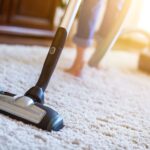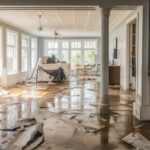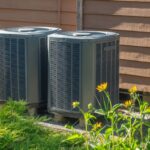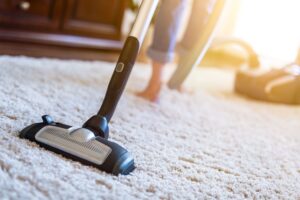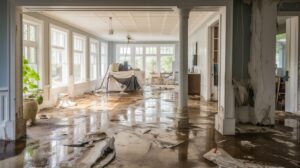
You might not think about your sewer lines until there’s a problem, but noticing the early signs of a crack can save you time and money. Persistent foul odors, slow drains, and unexpected wet spots in your yard are just a few indicators something’s amiss below ground. While you could attempt a basic inspection yourself, understanding professional techniques like video camera assessments or smoke testing is essential. So, what should you do if you confirm the worst? Options like trenchless repair or traditional excavation might be on the table, but how do you choose the right one?
Signs of a Cracked Sewer Line
When it comes to recognizing the signs of a cracked sewer line, there are several key indicators you shouldn’t ignore. One of the most noticeable signs is persistent, unexplained foul odors in your home. If you catch a whiff of sewer gas, especially near drains or in the basement, it’s a red flag. Sewer gas smells like rotten eggs and shouldn’t be lingering indoors.
Next, pay attention to your plumbing fixtures. Slow drains, gurgling toilets, or water backing up in unusual places can signal trouble. If you notice multiple fixtures acting up simultaneously, it’s time to investigate further. These issues often arise when a sewer line is compromised, disrupting the normal flow.
Additionally, be on the lookout for mold or mildew. A cracked sewer line can lead to moisture build-up, which encourages mold growth. If you’ve tried everything and can’t pinpoint the source of mold, a hidden sewer issue might be to blame.
Finally, keep an eye on your water bills. Sudden, unexplained increases could suggest a leak somewhere in the system. If your water consumption hasn’t changed but the bill’s climbing, it’s worth getting your sewer line checked.
Unusual Yard Changes
While you mightn’t immediately connect your yard to potential sewer line issues, unusual changes in your outdoor space can be a telltale sign of trouble below. One of the most noticeable signs is patches of unusually green or lush grass. If you notice that certain areas of your lawn are thriving while others aren’t, it could be because a cracked sewer line is leaking nutrients into the soil, acting like a natural fertilizer.
Another indication is soggy or sunken spots in your yard. Even if it hasn’t rained recently, you might find areas that feel wet or spongy underfoot. This can happen when leaking sewage saturates the soil, causing it to become waterlogged.
Over time, this can lead to sinkholes or depressions in your yard, which aren’t only unsightly but potentially hazardous.
In addition, an unexpected increase in rodents or insects might be linked to a cracked sewer line. These pests are attracted to the moisture and nutrients provided by the leak.
While these yard changes can be alarming, they’re essential early warnings. Addressing them promptly can prevent more severe problems, saving you time and money in the long run.
Indoor Plumbing Symptoms
Beyond the telltale signs in your yard, indoor plumbing symptoms can also indicate a cracked sewer line. One of the first signs you might notice is slow draining water. If your sinks, bathtubs, or showers take longer than usual to drain, it could be due to a blockage or a crack in the sewer line disrupting the flow.
You might also hear gurgling sounds coming from your drains or toilets when using water fixtures. This happens because the air can’t flow properly through the plumbing system, a common symptom of a compromised sewer line.
Another concerning symptom is the persistent foul odor of sewage inside your home. If you notice this smell, it’s crucial to act quickly, as it’s not only unpleasant but can also pose health risks.
Additionally, if you’re dealing with frequent backups or overflows in your toilets, sinks, or other fixtures, it’s a red flag. These backups often indicate a blockage or a break in the sewer line.
Lastly, take note of any unexpected increase in your water bill. This could suggest a leak somewhere in the system, possibly due to a cracked sewer line. Keep an eye out for these signs to protect your home.
Investigating Sewer Line Issues
Identifying indoor plumbing symptoms is just the start. Once you’ve noticed issues like slow drains or foul odors, it’s essential to dig deeper to determine if they’re stemming from cracked sewer lines. Contacting a plumbing and drain rooter professional is a good starting point. They have expertise with your neighborhood pipes, specialized cameras and tools to find and identify problems.
If you are hoping to uncover this as a DIY project, start by examining your home’s exterior for signs like soggy patches in your yard or lush, unusually green grass—these might indicate a leaking sewer line nourishing the soil. Also, keep an eye out for sinkholes or indentations, as these can be signs of serious underground issues.
You’ll want to check any exposed pipes in your basement or crawl spaces for visible cracks, rust, or leaks. Listen closely for any gurgling sounds when using your plumbing fixtures, as this can be an indicator of compromised sewer lines.
Additionally, be mindful of any unexplained pest problems, like an increase in rodents or insects, which might indicate a breach in your sewer lines.
Before assuming the worst, verify that all your plumbing vents are clear of obstructions, as blockages can mimic sewer line problems.
Professional Cleaning and Inspection Tips
Engaging a professional for sewer line inspection can provide a thorough assessment that goes beyond what you can observe on your own.
Professionals use specialized tools and techniques, to ensure a detailed evaluation of your sewer system. One common method is video camera inspection. This involves inserting a waterproof camera into the sewer line, allowing the technician to see inside and identify any cracks, blockages, or other issues in real-time. This technique provides a clear view of the pipe’s interior, pinpointing the exact location of the problem.
Another technique is smoke testing. This involves blowing non-toxic smoke into the sewer lines to detect breaks or leaks. If smoke escapes through cracks, it helps locate the damaged sections. This method is particularly useful for identifying hidden leaks that mightn’t be visible through video inspection.
Hydrostatic pressure testing is also used to assess the sewer line’s integrity. This involves sealing off a section of pipe and filling it with water to check for leaks. If the water level drops, it indicates a crack or leak.
Repair and Replacement Options
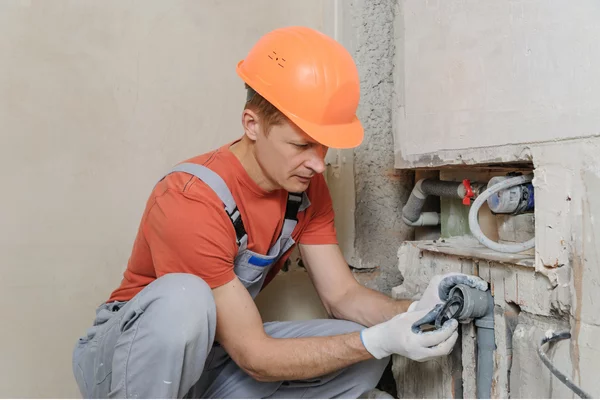
Cracked sewer lines can lead to significant problems, so it’s important to explore repair and replacement options promptly. Depending on the damage’s extent, you might consider trenchless repair methods like pipe lining or pipe bursting.
Pipe lining involves inserting a flexible resin-coated tube into the damaged pipe, which hardens and forms a new pipe within the old one. This method can be effective for minor cracks without the need for extensive excavation.
If the damage is too severe, pipe bursting could be your best bet. This method involves breaking the old pipe apart while simultaneously pulling a new pipe into place. It’s ideal for more significant damage but requires careful execution by professionals.
Sometimes, traditional excavation might be necessary, especially if the pipe is beyond repair or if trenchless methods aren’t feasible. While this can be more disruptive and costly, it guarantees complete replacement of the damaged section.
Before making a decision, consult with a professional to evaluate your specific situation. They’ll help you weigh factors like cost, time, and environmental impact.
Taking prompt action can prevent further complications and guarantee your sewer system functions smoothly.
Preventive Maintenance Tips
Regular preventive maintenance can save you from costly repairs down the line. Keeping an eye on your sewer system is essential to avoiding cracks and major disruptions.
First, regularly inspect your drains for slow drainage or gurgling sounds. These could be early signs of a blockage or crack. Don’t wait for things to get worse; address them as soon as they appear.
Second, consider scheduling annual professional inspections. A plumber can use a camera to look inside the sewer lines, identifying potential issues before they evolve into serious problems. This proactive step helps catch minor issues early, saving you money and hassle.
Third, be mindful of what you flush or pour down the drains. Avoid disposing of grease, oil, or non-degradable items like wipes and sanitary products, which can accumulate and cause blockages. Educating household members about proper waste disposal can greatly reduce the risk of clogs

